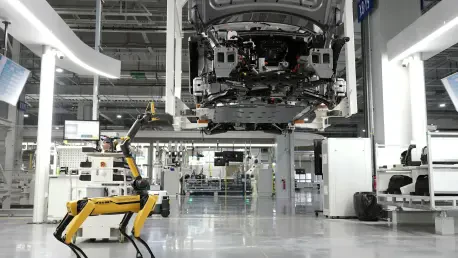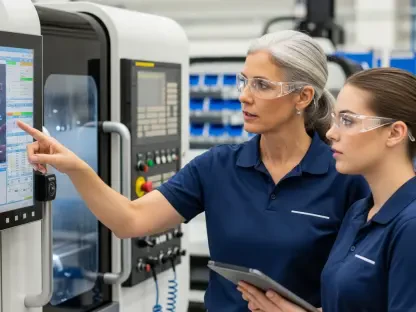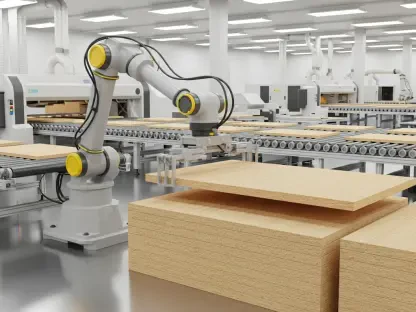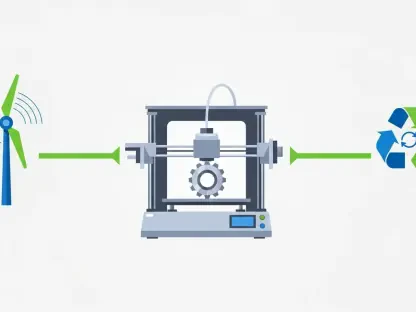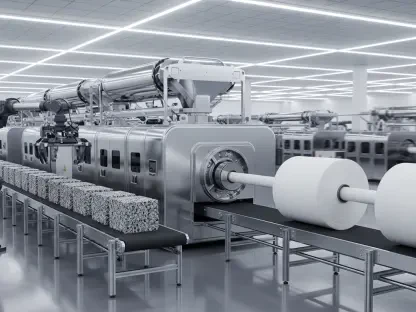Overview of the Defense Manufacturing Sector
The defense manufacturing sector stands as a cornerstone of national security, ensuring that nations are equipped to protect their interests and maintain global stability in an increasingly complex geopolitical landscape. With escalating threats and the urgent need for rapid response capabilities, this industry is tasked with delivering cutting-edge technologies and systems that can adapt to dynamic challenges. From advanced weaponry to strategic missile systems, the sector’s role in safeguarding sovereignty cannot be overstated, making it a critical focus for governments and private enterprises alike.
Key segments within this field, such as solid rocket motors (SRMs) and hypersonic technologies, are at the forefront of innovation, driven by major players like Lockheed Martin and emerging innovators like X-Bow Systems. These companies are pushing boundaries to meet urgent demands for faster, more reliable, and cost-effective solutions. Technological advancements, particularly in automation and digital integration, are reshaping production processes, enabling manufacturers to achieve unprecedented precision and efficiency in delivering critical defense assets.
The pressure to meet stringent timelines while adhering to rigorous regulatory and security standards adds another layer of complexity to the industry. Defense manufacturing must balance innovation with compliance, ensuring that every component meets exacting specifications to protect both national interests and proprietary data. This delicate balance drives the adoption of transformative tools, setting the stage for groundbreaking changes in how defense technologies are developed and deployed.
AI’s Transformative Impact on Defense Production
Emerging Trends in AI Integration
Artificial Intelligence (AI) is rapidly becoming a linchpin in defense manufacturing, with trends such as generative AI, machine learning operations (MLOps), and digital twins leading the charge. These technologies enable manufacturers to simulate and optimize production processes before physical implementation, reducing errors and accelerating development cycles. The growing adoption of AI reflects a broader shift toward data-driven decision-making, which is essential for staying ahead in a highly competitive and fast-evolving sector.
In response to demands for speed, scalability, and affordability, AI is proving instrumental in the production of tactical rocket motors and other critical defense technologies. By leveraging real-time data analysis, manufacturers can fine-tune operations on the fly, ensuring that output aligns with precise mission requirements. This capability is particularly vital for programs involving missile and hypersonic systems, where even minor delays or defects can have significant consequences.
Moreover, AI opens up new opportunities for innovation through enhanced process control and predictive maintenance. These advancements allow for more efficient resource allocation, freeing up engineering teams to focus on strategic development rather than routine troubleshooting. As a result, the integration of AI not only streamlines workflows but also fosters a culture of continuous improvement within the industry.
Market Dynamics and Growth Opportunities
The incorporation of AI into defense manufacturing is reshaping market dynamics by driving significant efficiency gains and cost reductions. Automated systems reduce manual labor costs and minimize production downtime, while AI-driven analytics help identify bottlenecks before they escalate into larger issues. This transformation is enabling companies to deliver high-quality products at a lower cost, a critical factor in securing contracts in a budget-conscious environment.
Growth projections for AI-driven defense solutions are promising, fueled by rising demand for missile systems and hypersonic programs. Industry forecasts suggest a steady increase in investment over the next few years, with partnerships playing a pivotal role in accelerating adoption. Collaborations, such as the one between X-Bow Systems and Lockheed Martin through the Astris AI Factory, are setting benchmarks for market performance by demonstrating how secure, scalable AI platforms can enhance production capabilities.
Looking ahead, the market is poised for expansion as more companies recognize the competitive edge offered by AI. The ability to rapidly scale operations while maintaining affordability positions early adopters to capture significant market share. This trend underscores the importance of strategic alliances and investments in technology to meet both current and future defense needs.
Challenges in Implementing AI Solutions
Integrating AI into defense manufacturing is not without its hurdles, as technological barriers often complicate deployment. The complexity of existing systems, coupled with the need for seamless integration, requires substantial expertise and resources. Additionally, ensuring that AI tools can operate within highly specialized environments without compromising performance remains a persistent challenge for many organizations.
Market-driven obstacles further compound these difficulties, as manufacturers must balance the push for innovation with tight cost constraints. Developing and maintaining AI systems can be resource-intensive, often straining budgets that are already allocated to other critical areas. To address this, scalable AI platforms offer a potential solution, allowing companies to start small and expand capabilities as funding and needs evolve.
Overcoming these barriers requires a multifaceted approach, including strategic partnerships and targeted investments in secure digital environments. Collaborations with established players can provide access to proven technologies and expertise, while robust cybersecurity measures protect intellectual property (IP) from potential threats. By prioritizing these strategies, companies can navigate the complexities of AI adoption and unlock its full potential in defense production.
Regulatory and Security Considerations
Security and compliance are paramount in defense manufacturing, where the stakes of data breaches or regulatory violations are extraordinarily high. The industry operates under strict guidelines to protect sensitive information and ensure that technologies meet national security standards. This necessitates the use of accredited digital environments that can withstand rigorous scrutiny and safeguard proprietary processes from unauthorized access.
A prime example of addressing these needs is the collaboration between X-Bow Systems and Lockheed Martin via the Astris AI Factory. This partnership establishes a trusted digital backbone for manufacturing operations, ensuring defense-grade security for processes like Advanced Manufactured Solid Propellant (AMSP). By leveraging a platform already proven in classified settings, sensitive data remains protected throughout the production lifecycle, from design to deployment.
Regulatory standards also play a significant role in shaping AI adoption, as compliance with government mandates is non-negotiable. Maintaining data integrity across all stages of manufacturing is essential to meeting these requirements and preserving trust with stakeholders. As AI continues to evolve, aligning technological advancements with regulatory frameworks will remain a critical focus to ensure both innovation and accountability.
Future Prospects of AI in Defense Manufacturing
The trajectory of AI in defense manufacturing points toward a landscape defined by emerging tools like generative AI and real-time production execution. These advancements promise to further streamline operations, enabling manufacturers to respond to mission-critical demands with unprecedented agility. As algorithms become more sophisticated, their ability to predict and mitigate production issues will redefine operational efficiency.
Potential disruptors, such as shifting national security priorities and intensifying global technological competition, are likely to influence strategic directions for companies like X-Bow. Staying ahead requires a proactive approach to adopting cutting-edge solutions while anticipating changes in geopolitical and technological landscapes. This adaptability will be key to maintaining relevance in an industry where requirements can shift rapidly.
Secure, scalable AI platforms are expected to drive future growth by providing the flexibility needed to meet increasing demand. For innovators in the field, investing in these technologies offers a pathway to not only address current challenges but also position themselves as leaders in delivering next-generation defense solutions. The emphasis on security and scalability will continue to shape how AI transforms the sector in the coming years.
Final Reflections and Strategic Recommendations
Reflecting on the insights gathered, the partnership between X-Bow Systems and Lockheed Martin through the Astris AI Factory marks a pivotal moment in enhancing efficiency, security, and scalability in defense manufacturing. This collaboration demonstrates how AI can streamline production while upholding the highest standards of data protection. The integration of advanced tools provides a blueprint for balancing innovation with stringent security demands.
Moving forward, a strategic focus should be placed on sustained investment in AI-driven solutions to address evolving national defense priorities. Companies are encouraged to prioritize partnerships that offer access to proven technologies and expertise, ensuring that they can scale operations without compromising on quality or compliance. Additionally, fostering a culture of continuous learning and adaptation proves essential to staying competitive.
As a next step, stakeholders should advocate for policies that support the development and accreditation of secure digital environments. Allocating resources toward research and development of AI tools tailored for defense applications also emerges as a critical consideration. By taking these proactive measures, the industry can position itself to meet future challenges with resilience and innovation, ensuring long-term growth and stability.
